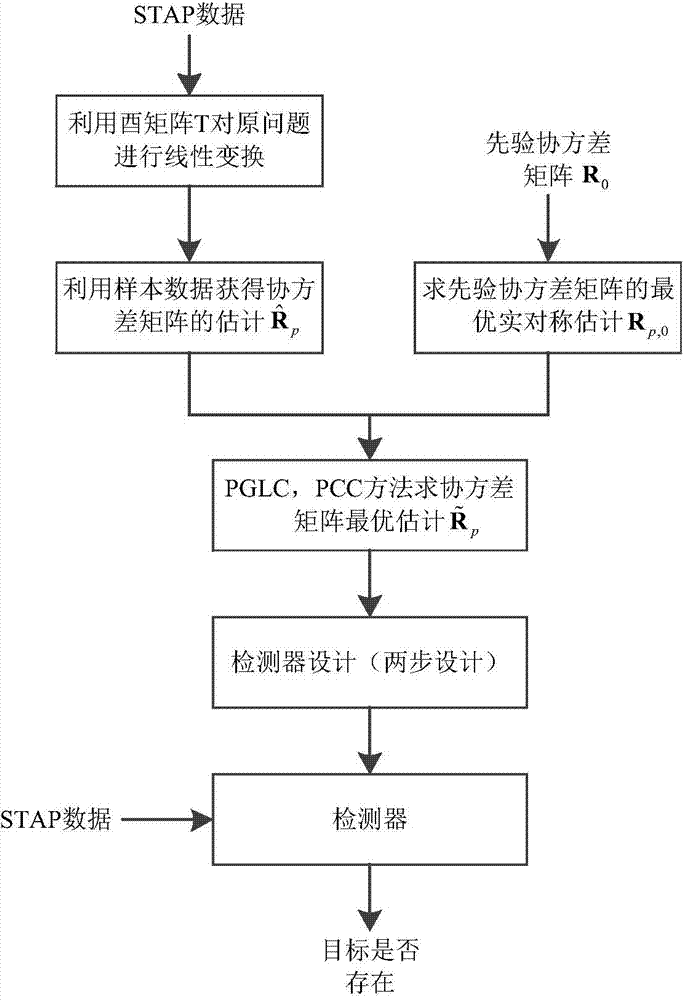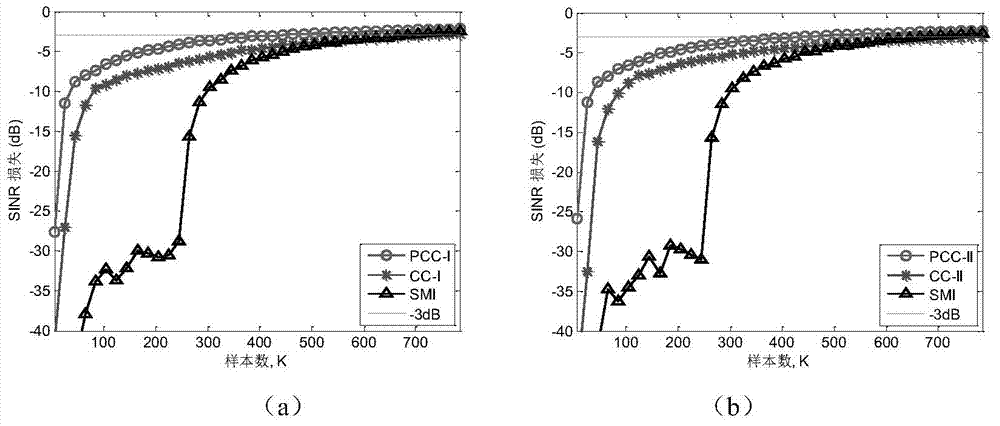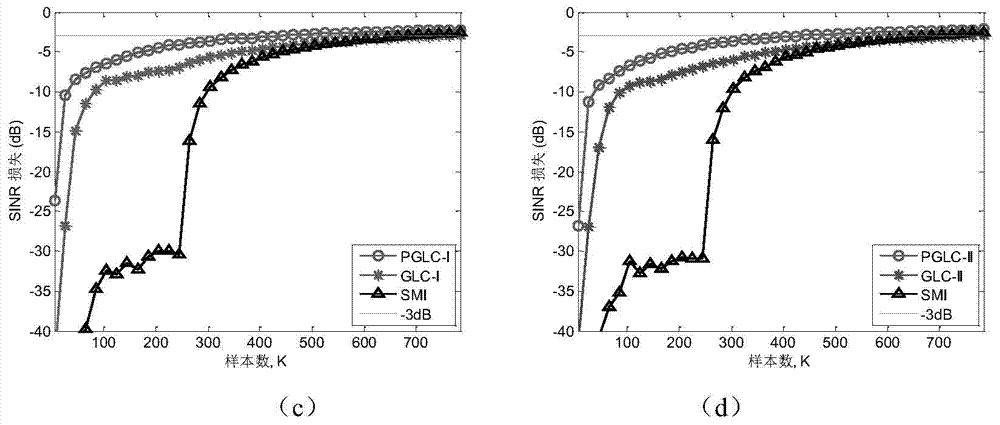Knowledge assisted space-time adaptive processing method integrating generalized symmetrical structure information
A space-time self-adaptive, knowledge-assisted technology, applied in radio wave measurement systems, instruments, etc., can solve problems such as difficulty in obtaining enough uniform samples, and achieve the effects of improving detection performance, simple implementation, and reducing demand
- Summary
- Abstract
- Description
- Claims
- Application Information
AI Technical Summary
Problems solved by technology
Method used
Image
Examples
Embodiment Construction
[0021] The present invention will be described in detail below in conjunction with the accompanying drawings and specific embodiments.
[0022] The implementation process of the present invention is as figure 1 As shown, it specifically includes the following five steps:
[0023] 1. Using the unitary transformation matrix for linear transformation, the original space-time adaptive processing problem is converted into an equivalent form, and the covariance matrix is changed from a complex generalized symmetric matrix to a real symmetric matrix of the same dimension.
[0024] The purpose of STAP is to detect the corresponding target in the environment with clutter, interference and thermal noise. The detection problem can be described as the following binary statistical hypothesis testing problem:
[0025] h 0 :x=n,x k =n k (k=1,...,K) (1)
[0026] h 1 :x=av+n,x k =n k (k=1,...,K)
[0027] Wherein, x is an M×1 dimensional complex vector, representing the echo data of ...
PUM
 Login to View More
Login to View More Abstract
Description
Claims
Application Information
 Login to View More
Login to View More - R&D
- Intellectual Property
- Life Sciences
- Materials
- Tech Scout
- Unparalleled Data Quality
- Higher Quality Content
- 60% Fewer Hallucinations
Browse by: Latest US Patents, China's latest patents, Technical Efficacy Thesaurus, Application Domain, Technology Topic, Popular Technical Reports.
© 2025 PatSnap. All rights reserved.Legal|Privacy policy|Modern Slavery Act Transparency Statement|Sitemap|About US| Contact US: help@patsnap.com



